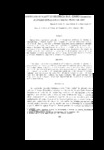Detección de fuentes de resistencia en el género Licopersicon al ataque de Phytophthora infestans (MONT) de Bary

View/
Date
1968Author
Guillén P., Eduardo R.
Galindo A., Jorge
Brauer H., Oscar
Metadata
Show full item recordAbstract
Treinta líneas, representando germoplasma de Lycopersicon esculentum, L. hirsutum, L. pimpinellifelium y Solanum pennellii, fueron expuestas al ataque de Phytophthora infestans con el fin de valorar su resistencia y seleccionar progenitores para la obtención de variedades resistentes al tizón tardío. Las pruebas fueron realizadas bajo condiciones de campo, invernadero y laboratorio. El comportamiento de las líneas fue variable en las diversas pruebas, posiblemente debido a diferentes razas que participaron en las inoculaciones. Por ejemplo, la variedad W.Va 63 mostró resistencia en algunas pruebas de laboratorio, pero en el campo fue altamente susceptible. Las líneas que exhibieron la máxima resistencia fueron: L. hirsutum, y dos líneas derivadas de cruzas entre L. esculentum y L. pimpinellifolium. ABSTRACT: Thirty tomato lines representing germoplasm of Lycopersicon esculentum, L. hirsutum, L. pimpinellifolium and Solanum pennellii were tested against Phytophthora infestans. The purpose was to select resistant material to be used in breeding programs, directed to obtain resistant varieties. The tests were performed in the field, greenhouse and laboratory. The behavior of the genetic material was variable in the various tests possibly due to the ocurrence of different pathogenic races. For example, the variety W.Va. 63 showed resistance in most of the laboratory tests, buty under field conditions was highly susceptible. The highest resistance was found in the line of L. hirsutum and two lines obtained from the cross between L. esculentum and L. pimpinellifolium.
Collections
- Agrociencia [55]
